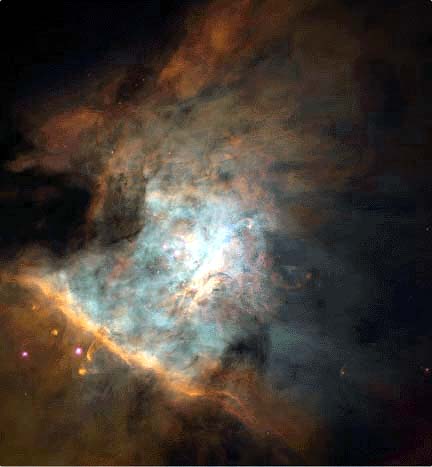Space EnvironmentWhat is in space? |
Most of the universe is empty space, called a vacuum, but it is an
imperfect vacuum. There are clouds of interstellar dust and the tiny particles
that make up the solar wind. There are many isolated particles and hydrogen
atoms, which sometimes form clouds over a billion kilometers wide called "nebulae."
Besides nebulae and interstellar dust, there are also bits of rubble as big
as small moons to as small as grains of sand. These bits of rubble are called
planetoids and asteroids. Radio, heat, and x-rays all echo through space, as
do beams of light. There is radiation bursting forth in solar flares.

The Orion Nebula. Image from NASA's Observatorium, http://observe.ivv.nasa.gov/nasa/core.shtml
In addition, we humans are putting quite a lot into space around our planets, both satellites and probes and "space junk" caused by spacecraft falling apart in space. Perhaps there are similar rings of manufactured items around other planets far, far away...
![]()
What is an asteroid, a planetoid, a meteoroid a micrometeoroid?
Is there sound in space?
What is energy?
What are radio waves?
![]()
What are planets made of?
What are stars made of?
What is interstellar dust?
What is electromagnetic radiation?
Does heat travel differently in space than it does on Earth?
![]()
How do we know what's in space?
What is a solar flare?
What is solar wind?
Why don't we receive light from all the stars in the universe?
Where does energy come from and go?
What makes EM radiation?
![]()